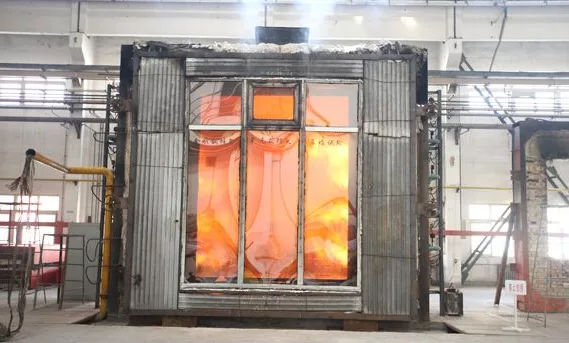Differences Between Fire-Resistant Windows and Fire Windows: A Technical Analysis
Abstract: The distinction between fire-resistant windows and fire windows has significant implications for building safety and compliance with fire protection standards. This paper explores the evolution, classification, and technical requirements of both types, focusing on their applications in modern architecture. Emphasis is placed on the development of Chinese fire doors and windows, including the integration of automatic closing mechanisms and the balance between fire resistance and functionality in building design.

I. Introduction
The use of fire windows has a long history, dating back to the earliest steel fire windows. The technical standards for these windows were originally governed by the GB16809-1997 “Steel Fire Windows” standard, which did not require automatic closing of the window sash but did mandate certain insulation properties. Over time, the standard was revised, leading to the release of GB16809-2008 “Fire Windows,” which introduced new requirements for thermal sensitivity, sash closure reliability, and automatic closure time. These changes were driven by concerns about the safety of fire windows without automatic closing features.
II. Evolution of Fire Windows
Fire windows have diversified over time, with classifications based on frame materials, such as steel, wood, and composite materials, and fire resistance performance, including insulated and non-insulated fire windows. Insulated fire windows are further categorized into Class A, B, and C based on their fire resistance ratings.
A. Classification by Frame Material
- Steel Fire Windows: Originally the most common type, known for durability and fire resistance but limited by poor thermal insulation and susceptibility to corrosion.
- Wooden Fire Windows: Preferred for aesthetic reasons, with certain limitations in fire resistance compared to steel.
- Composite Fire Windows: Combining materials like steel and wood to leverage the strengths of both.
B. Classification by Fire Resistance
- Insulated Fire Windows: Designed to prevent both the passage of fire and heat, categorized into various classes based on their resistance time.
- Non-Insulated Fire Windows: Primarily designed to block fire but allow heat to pass, suitable for certain applications where thermal insulation is less critical.
III. The Emergence of “Fire-Resistant Windows”
The term “fire-resistant window” does not have a clear definition in Chinese national standards. It has become a commonly used term in the door and window industry to describe exterior windows with fire integrity. This concept emerged with the implementation of the “Code for Fire Protection Design of Buildings” (GB50016-2014), which introduced new requirements for windows with fire integrity.
A. Fire Integrity Requirements
- Fire integrity: Defined by the ability of a window to maintain its structural integrity and prevent the spread of fire under test conditions specified in GB/T12513-2006 “Test Methods for Fire Resistance of Glazed Components.”
- Automatic Closing: While the code does not explicitly mandate automatic closing for these windows, there is an industry consensus that such a feature is necessary for safety. This requirement is also reflected in interpretations by the National Standard Management Group for Fire Protection Design.
B. Practical Implications
- Exterior Applications: Fire-resistant windows are primarily used as exterior windows in high-rise buildings, such as refuge rooms in residential buildings over 54 meters high, or in situations where B1 and B2 grade external insulation materials are used.
- Automatic Closure: For practical safety, fire-resistant windows, especially those with operable sashes, should have automatic closing mechanisms triggered by thermal sensors. This is essential for ensuring that the windows close in the event of a fire, preventing the spread of flames and smoke.
IV. Comparison with Traditional Fire Windows
Traditional fire windows, which include Class A, B, and C insulated windows, are typically used for interior fire compartments. These windows emphasize fire resistance and thermal insulation, making them suitable for applications such as firewalls in atriums, shopfronts in indoor pedestrian streets, and refuge floors in high-rise hospital buildings.
A. Material Considerations
- Steel Fire Windows: Known for their robustness and fire resistance, but with drawbacks in terms of insulation, sealing, and corrosion resistance.
- Aluminum Alloy and Plastic-Steel Fire Windows: Represent the future of fire windows, particularly for exterior applications. These materials offer a balance between fire resistance and aesthetic appeal, with the added benefit of automatic closing mechanisms that can be concealed for a sleeker appearance.
B. Performance Requirements
- Insulation and Sealing: While traditional fire windows focus on fire resistance and insulation, fire-resistant windows used as exterior windows must also meet standards for water-tightness, thermal insulation, and operational ease, as specified in GB16809-2008 “Fire Windows” and GB/T8478-2008 “Aluminum Alloy Windows and Doors.”
- Comprehensive Performance: Fire-resistant windows must satisfy all the performance criteria required for exterior building windows, with fire integrity being one of the many performance indicators.
V. Conclusion
In conclusion, the term “fire-resistant window” should be understood as a non-insulated fire window designed to meet the comprehensive performance requirements of exterior building windows while also featuring an automatic closing function controlled by thermal sensors. This interpretation aligns with the evolving standards and practices in the building industry and represents a rational and scientific approach to fire safety in modern architecture. As building codes and standards continue to evolve, the development and application of fire-resistant windows will play an increasingly important role in ensuring the safety and integrity of both residential and commercial structures.
This analysis underscores the importance of understanding the technical distinctions between different types of fire protection windows and highlights the need for continuous innovation in the design and implementation of fire safety systems, including the use of advanced materials and automated technologies in Chinese fire doors and windows.
